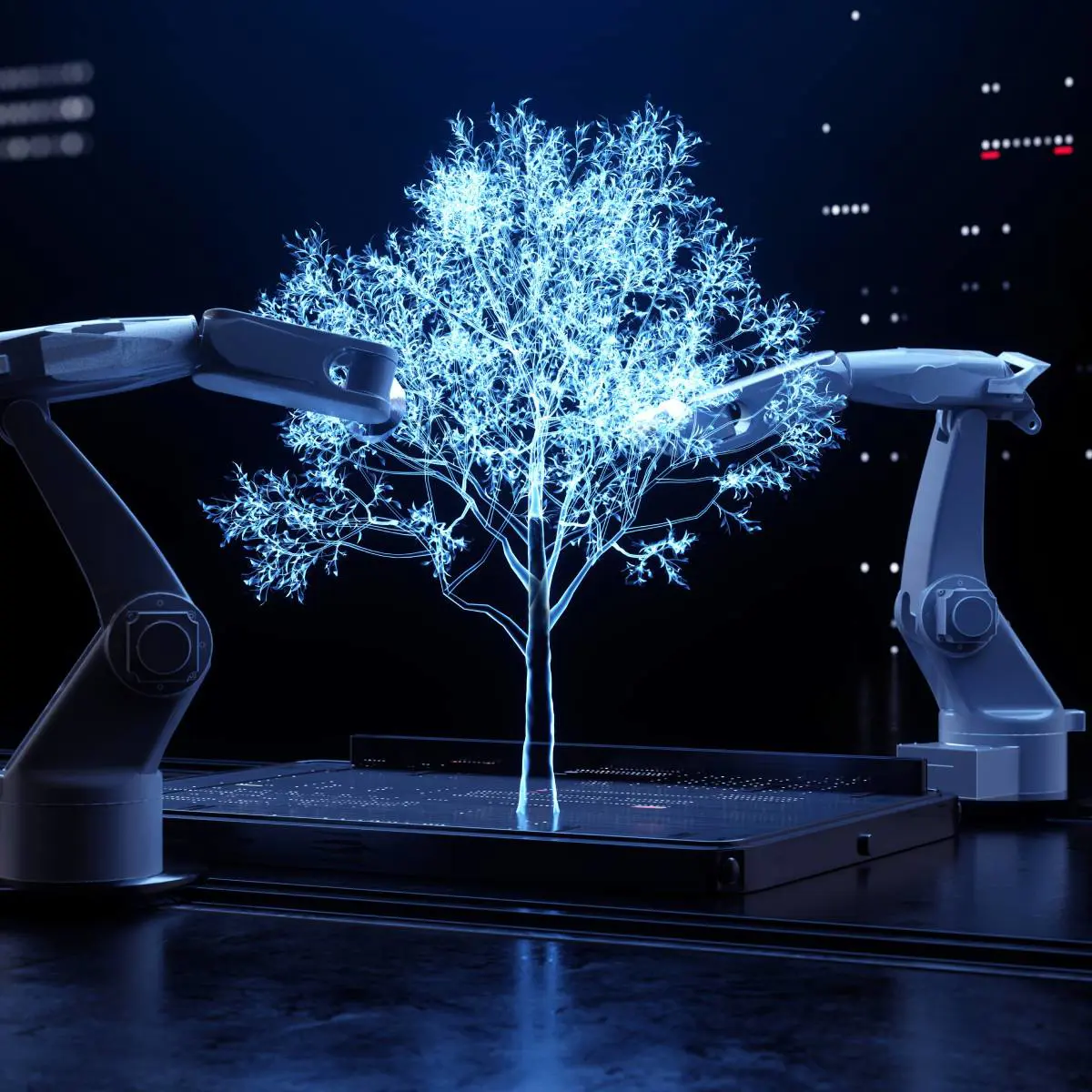
Robotics: no longer sci-fi



Many people are fascinated by robots, but why invest in them?
Robots have already revolutionised manufacturing processes and now they are set to change the way we live. Unprecedented computing power harnessed to Artificial Intelligence (AI) will enable robots to act autonomously, giving them the ability to learn, reason and recognise emotions, pictures, languages and maps.
Robots will soon be serving your meals, doing your shopping and even taking care of grandma. And when we need surgery, it will mostly be performed by robot-assisted procedures. The use of robotics in healthcare is accelerating and the number of robot-assisted procedures has more than doubled over the past five years.
So-called service robots are only starting to be deployed, but could in time become as prevalent as industrial robots.
Robots are part of a new industrial revolution, a technology revolution which, like earlier industrial revolutions, will generate substantial wealth for far-sighted investors. We believe automation is the only way to maintain a high level of productivity in a world with an ageing population.
How can we seize the opportunities offered by this revolution?
The underlying technology driving advanced robotics promises a continuous wave of innovation. Already, robotics and its related technologies have generated considerable value, often initiated by large multinationals. Yet investors can also benefit from the rise of small, innovative companies. Take, for example, a semiconductor manufacturer in the USA, which is using artificial intelligence to improve autonomous driving, a technology now adopted by automotive giants. Or a robot manufacturer whose own industrial robots are assembled by other robots.
Established brands have also reinvented themselves to capitalize on this trend towards automation. Consider, for example, a company that was once a simple link in a large chain, but has now become an undisputed leader in the field of electric and autonomous vehicles. Or an agricultural equipment manufacturer whose autonomous tractors are equipped with sophisticated software, optimizing every aspect of agricultural production.
These companies, along with other innovative technology participants, have performed remarkably well over the past five years[1], pointing to continued high growth potential.
Indeed, most end-markets are set for double-digit growth in the years ahead. For example, smart cities could improve their energy efficiency by 30% over the next 20 years[2].
How do you identify investible companies?
Not all companies which make robots or develop innovative technologies are investible.
We perform sophisticated screenings on thousands of companies worldwide and assess which companies derive meaningful revenues from robotics and/or innovative technologies.
Valuable additional resource is provided by an advisory board of leading academics (Candriam Advisory Board Innovative Technologies & Robotics), who share high-level insights on robotics and other innovative technology, give guidance on research issues and help to generate ideas.
We conduct an extra-fnancial analysis to better understand risks and opportunities in terms of ESG (Environmental, Social & Governance) criteria(2). We
assess the exposure of companies’ activities to major sustainability themes as well as their stakeholder management. We exclude companies that do not
adhere to the 10 Principles of the United Nations Global Compact, as well as those whose activities are controversial such as arms, tobacco, thermal coal and other activities we consider to be unsustainable.
We add an innovation flter. Companies are rated on their innovation capacity using multiple factors. For instance, companies that are not open to innovation as a fundamental value are excluded from the portfolio.
The portfolio’s composition results from a selection of securities based on fve fundamental criteria combining fnancial and extra-fnancial analyses: management quality, growth potential, competitive positioning, high level of proftability and low level of debt. Stock picking and portfolio construction beneft from exchanges between the managers and other Candriam equity management teams as well as the risk management and trading departments. In addition, there is also the two managers’ average of 16 years’ experience and Candriam’s expertise in managing thematic strategies.
(2) The ESG analysis described above for companies is applied to at least 90% of the strategy’s investments excluding deposits, cash and index derivatives.
Could you share any examples of innovative technology?
Artificial Intelligence, Virtual Reality, OLED technology and quantum computing to name just a few. In the case of quantum computing, which is millions of times more powerful than current digital computing systems, there are three listed companies active in this domain. It is a technology that we are monitoring closely and we will invest in it as soon as we observe a meaningful revenue contribution.
Technology companies excite investors, how do you make sure you are not over-paying?
The trend towards advanced automation is only just beginning and it is hard to imagine that well-selected companies will not deliver strong top and bottom line growth over the longer term. The industry, we think, is entering a sweet spot where a number of disruptive technologies are moving from design to full implementation – autonomous vehicles, personal service machines and robots operating alongside humans in the workplace.
Naturally, as in any investment, you need to have a strong buy-and-sell discipline. Decisions about whether to buy or sell shares in this sector should be based on a rigorous fundamental analysis, rather than on emotion.
We think it is important to minimise timing decisions and to invest according to durable trends. It is helpful having a mix of technology and financial skills to do this, as well as experience of combining larger companies and smaller, niche companies within the same portfolio. The ability to do this leads to portfolios which have lower turnover.
Which types of investors might be attracted to robotics?
Gaining exposure to the secular growth theme of robotics and automation is not a bet on the far future. Value and wealth in the sector has been created for years and this is likely to accelerate as the “fourth industrial revolution” becomes a significant driver of the global economy.
Although the strategy is a satellite rather than a core exposure for most investors, perceptions about its role in the portfolio may change as robots come to operate in the majority of households and the sector becomes mainstream.
Like many exciting, emerging sectors, this one is exposed to short-term volatility, but the ongoing development of revolutionary products that positively alter the future should ensure longer-term outperformance.
Robotics: No longer Sci-Fi

Johan Van Der Biest, Felix Demaeght and Nathaniel Wejchert explain how thematic investment skills combined with solid financial analysis can identify cutting-edge technologies at reasonable prices.
